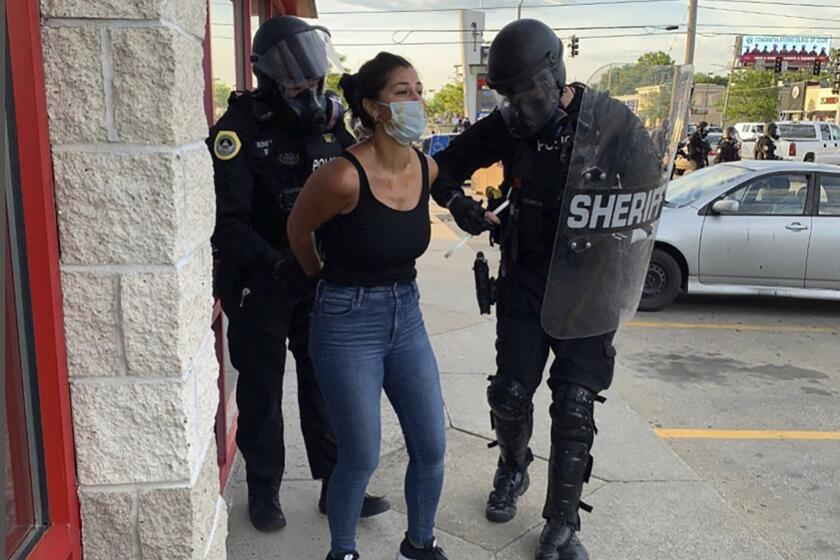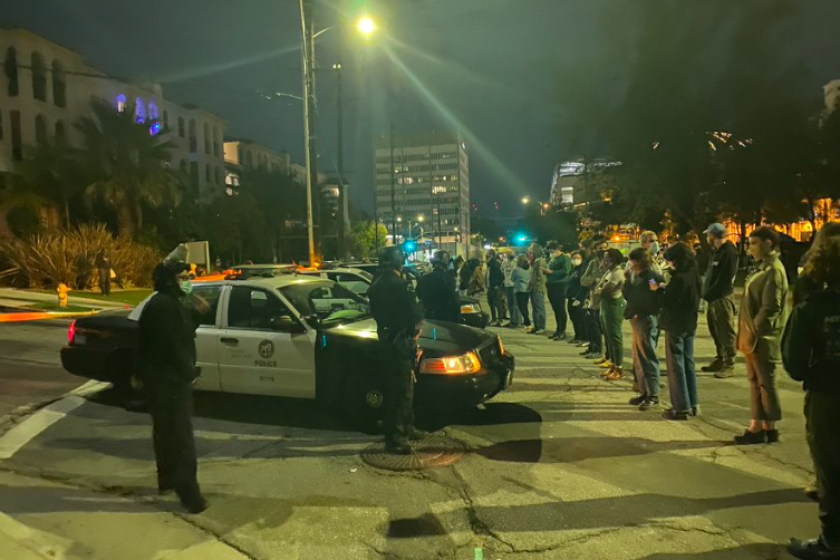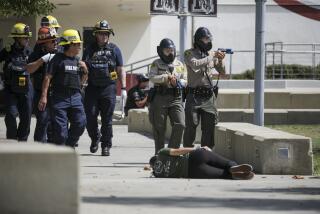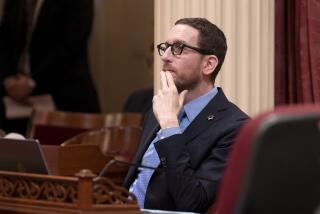Editorial: Newsom must act; reporters need protection at protest scenes
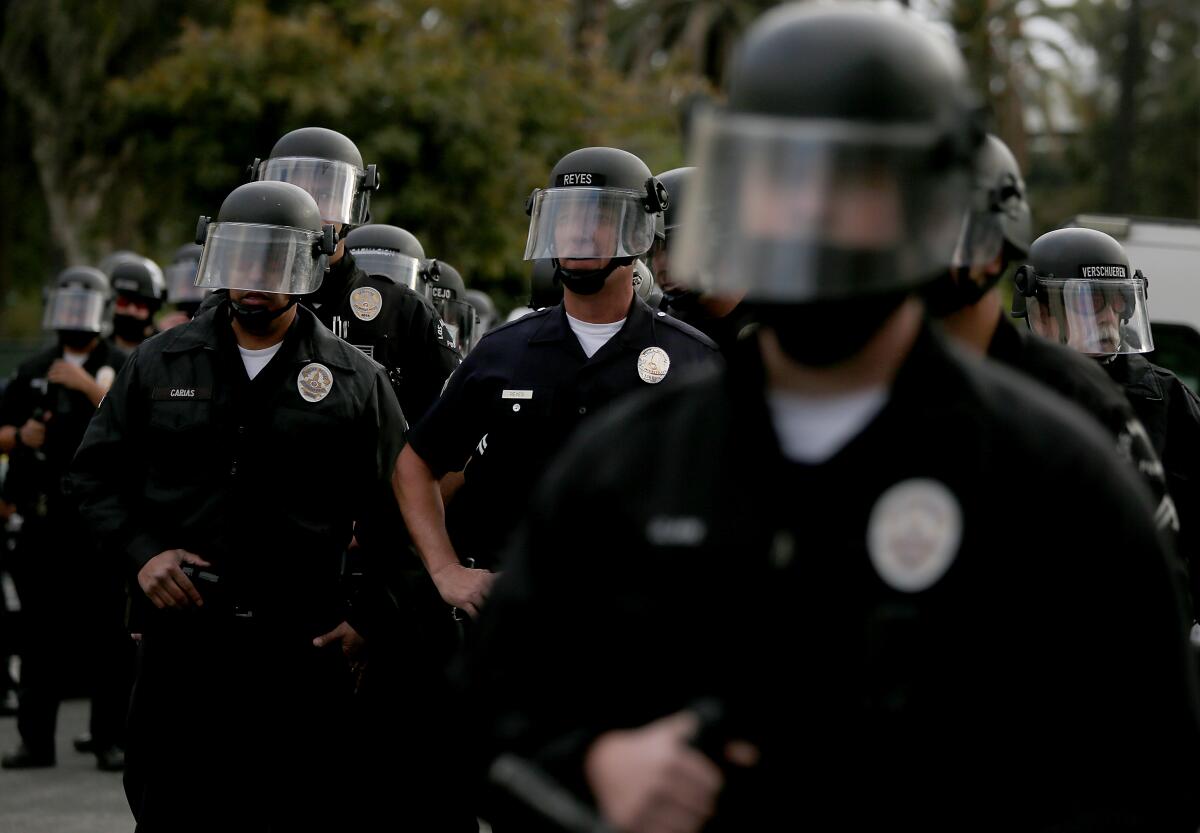
- Share via
California law allows peace officers to seal off disaster areas from the public, including scenes affected by flood, fire, earthquake and accident, and they can further close off access to emergency field command posts set up to respond to such calamities. Anyone who remains on the scene after being told to evacuate is subject to arrest and can be charged with a misdemeanor.
But the law specifically exempts representatives of news organizations, which of course makes perfect sense. Reporters, photographers, videographers and crews have to be able to enter disaster scenes in order to cover them. That’s how Californians and indeed the world are able to understand the magnitude of devastation from catastrophes like the 2018 Woolsey fire, which swept through the Santa Monica Mountains and nearly destroyed Malibu, not to mention more recent fires that have threatened Lake Tahoe and an iconic grove of sequoias.
News reporting is essential at disaster scenes because it provides the public with information that could make the difference between life and death to residents, workers, commuters and others. And not incidentally, it allows the public to learn how its front-line responders are performing. Without journalists present, governmental authorities would have a monopoly on disaster scene access and information.
The same statute allows reporters access to law enforcement command posts set up to respond to “any riot or other civil disturbance.”
Yet over the last year and a half, police have detained, arrested and injured reporters at public protests for staying on the scene after others are ordered to disperse. There have been instances in which it seemed that police were specifically targeting journalists, perhaps because of frustration over news reporting critical of their actions. It has become increasingly apparent that police commanders and chiefs do not know, or are unconcerned by, the role of reporters and the exemption afforded them by state law.
A bill to protect authorized reporters who cover protests after police close areas to the public is good, as far as it goes, and deserves support.
Confusing matters is an additional statute — one that does not mention reporters — that makes it illegal for anyone to stay on the scene of “any riot, rout or unlawful assembly” after police order them to disperse. That creates a lack of clarity or an apparent inconsistency that should be corrected.
Last year, Gov. Gavin Newsom vetoed a bill to clarify reporter access at protest scenes because, he said, it could inadvertently allow “fringe groups” to enter a restricted area. In his veto message, he said his police advisors had offered some “concrete recommendations on protecting journalists” that would get the job done.
But they don’t. Newsom’s advisors may have made some fine recommendations on correcting poor police crowd control management. But their suggestions dealing with reporter access boil down to improving police training so officers better understand the role of journalists. That’s wholly inadequate.
A year and numerous outrageous arrests and police-inflicted injuries later, another bill dealing with the issue has come to Newsom’s desk, and it’s high time he signed it.
SB 98 mostly reiterates the language of the current law but makes it abundantly clear that it applies to protest scenes and not just disasters.
The issue that concerned Newsom a year ago — how police are to distinguish between “legitimate” and “fringe” reporters, and whether they even have the right to make that distinction — will have to be addressed by local police agencies working in closer cooperation with news organizations. Newsom, his veto message notwithstanding, has not offered any meaningful alternative.
Vetoing a second time would improperly signal to police that they are within their rights to arrest reporters for doing their jobs.
Signing the bill would demonstrate to police that they must take more seriously the constitutionally protected role of journalists at protest scenes, whether or not they approve of what those reporters are writing, saying, recording, tweeting or showing.
Several reporters, including one for the Los Angeles Times, were detained during the police operation in Echo Park. That has to stop.
It might also help reboot Newsom’s own relationship with the media. Those outside of this business might look at the recent recall attempt and the strong support the governor got from so many newspaper editorial pages (including this one) and columnists, and conclude that we and the governor get along swimmingly. In fact, until the final weeks before the election, Newsom was fairly inaccessible. At disaster scenes, he has selected his own media coverage, inviting representatives of favored outlets but not the typical pool of reporters from multiple organizations.
Still, he should sign SB 98 not as a gesture to journalism but because it is the right step to take to clarify state law and to ensure that reporters can continue to bring essential news to Californians.
More to Read
A cure for the common opinion
Get thought-provoking perspectives with our weekly newsletter.
You may occasionally receive promotional content from the Los Angeles Times.
